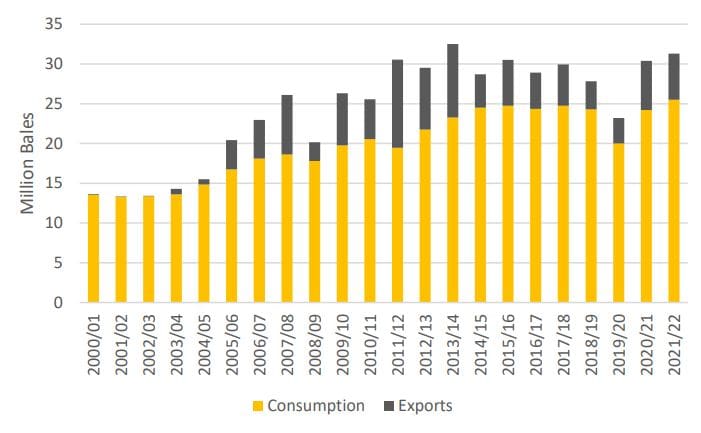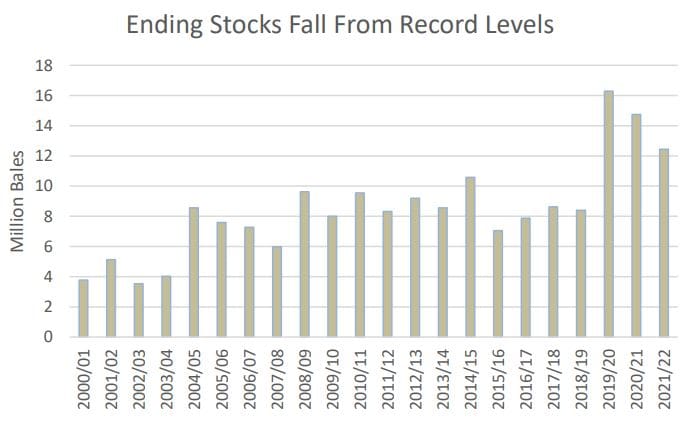
Figure 1: India: Record consumption and strong exports.
INDIA’s 2021/22 cotton consumption is forecast at a record 25.5 million bales (Mb) and exports are projected at the second-highest level in eight years at 5.8 million, according to the latest report from the United States Department of Agriculture (USDA).
This level of total use is forecast to lower ending stocks to 12.4(Mb), down nearly 4Mb compared with the record level two years prior.
A robust recovery from the COVID-19 pandemic and stronger domestic consumption and exports of cotton yarn, fabric, and products are projected to support a significant downfall in stocks.
Stock levels nearly doubled to a record two years ago primarily due to the following factors:
- First, production soared 3Mb while consumption fell over 4Mb.
- Second, India’s seed cotton prices fell below the Minimum Support Price (MSP), which drove record state purchases and storage of cotton lint in CY 2020 by the Cotton Corporation of India (CCI).
Yet, the CCI’s record stock levels quickly fell with record sales in 2020/21.
Mills and exporters were eager buyers, with 2020/21 domestic consumption rising 4Mb and exports at their highest in seven years at 6.2Mb.

Figure 2: India: Ending stocks fall from record levels.
India’s projected record consumption in 2021/22 is driven by the expected strong gross domestic product (GDP) growth as well as rising textile exports.
The International Monetary Fund’s October Update projected India’s GDP growth at 9.5 per cent in 2021 and 8.5pc in 2022, which is expected to support domestic consumption of cotton textiles and garments.
World GDP growth projections of 5.9pc in 2021 and 4.9pc in 2022 are expected to support exports of cotton lint, yarn, fabric, garments, and home furnishings.
CCI is not expected to purchase a significant quantity of domestic cotton in 2021/22, due to spot prices exceeding the MSP procurement price (5762 rupee per 100 kilograms of seed cotton).
Fewer government purchases and less storage coupled with the second-highest level of total offtake (consumption plus exports) are expected to prevent stocks from ballooning back to historically high levels.
Source: USDA



HAVE YOUR SAY